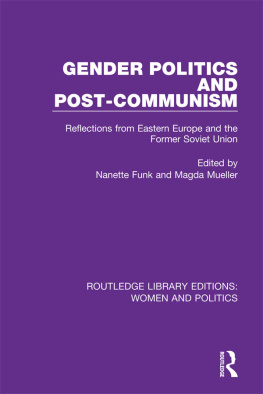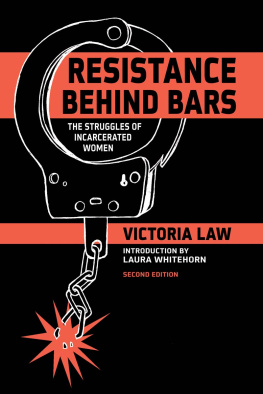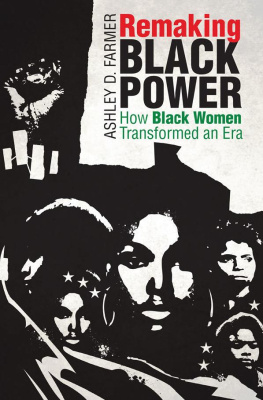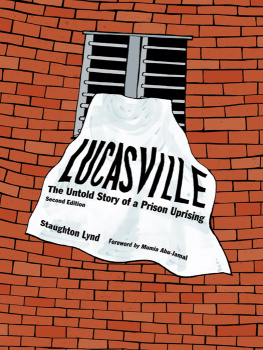razor wire
women
prisoners, activists,
scholars, and artists
edited by
JODIE MICHELLE LAWSTON
AND ASHLEY E. LUCAS

Published by
STATE UNIVERSITY OF NEW YORK PRESS
ALBANY
2011 State University of New York
All rights reserved
Printed in the United States of America
No part of this book may be used or reproduced in any manner whatsoever without written permission. No part of this book may be stored in a retrieval system or transmitted in any form or by any means including electronic, electrostatic, magnetic tape, mechanical, photocopying, recording, or otherwise without the prior permission in writing of the publisher.
For information, contact
State University of New York Press
www.sunypress.edu
Production and book design, Laurie Searl
Marketing, Michael Campochiaro
Library of Congress Cataloging-in-Publication Data
Razor wire women : prisoners, activists, scholars, and artists / edited by Jodie Michelle Lawston and Ashley E. Lucas.
p. cm. (Suny series in women, crime, and criminology)
Includes bibliographical references and index.
ISBN 978-1-4384-3531-2 (hbk. : alk. paper
ISBN 978-1-4384-3532-9 (pbk. : alk. paper)
1. Women prisoners. 2. Female offenders. 3. WomenIdentity. 4. Prisoners as authors. 5. Prisoners as artists. 6. Arts in prison.
I. Lawston, Jodie Michelle, 1977 II. Lucas, Ashley E., 1979
HV8738.R39 2011
365'.6082dc22 2010031925
10 9 8 7 6 5 4 3 2 1
For Patricia K. Thorn,
who did not live to see her art honored here.
For the woman we could not find,
may your life on the outside be joyous.
For all razor wire women,
as we strive to find community in one another.
Illustrations, Charts, Tables
ILLUSTRATIONS
3x Denied
Colored pencil drawing with painting by Dawna (Lessie) Brown |
Ruth Snyder
Painting by Malaquias Montoya |
Missing
Colored pencil and pastel by Ricky A. Taylor |
Visiting
Photo of Ashley Lucas by Billye Lucas |
Bound
Colored pencil by Joanie Estes-Rodgers |
Caged Innocence
Pen and ink drawing by Patricia K. Thorn |
Caught up on the Whirlwind
Pen and ink drawing by Valencia C. |
Connie Convicta and Vato Emiliano Comics
Colored pencil drawings by Ana Lucia Gelabert |
Gina
Black and white photo by Leslie Levitas |
Desiree
Black and white photo by Leslie Levitas |
Meredith
Black and white photo by Leslie Levitas |
Exhibition View 1
Color photo by Rosemarie Chiarlone |
Exhibition View 2
Color photo by Rosemarie Chiarlone |
Panty Series #11
Silver gelatin print by Rosemarie Chiarlone |
Exhibition View 3
Color photo by Crystal Molinary |
Subruler of the Element X
Color photo by Isabel Moros-Rigau |
CHARTS
TABLES
3x Denied
Dawna (Lessie) Brown
ARTIST'S STATEMENT
3x Denied was created when I received my third continuance. My first continuance was for twenty-four months, two more years away from my kids. When I received my third one, I totally shut down. I got my drawing pad, pencils, pastels, and paint, pulled out my foot locker to sit on, and started drawing. Three days later, I came to my room at lunch time, and my drawing pad was open to 3x Denied on my bed. I sat there staring at it, not believing that I had created something with so much feeling. All my pain and longing was there on paper. The most amazing part to me was the face. I have always had a block when it comes to faces. When 3x Denied is reversed in Photoshop, there are several faces throughout the drawing. One resembles a child, and one resembles a demon of some sort. Every piece of 3x Denied represents my longing for home in the hills of Kentucky, my pain of so many years of separation and loss, yet my determination to never give up on regaining my freedom.
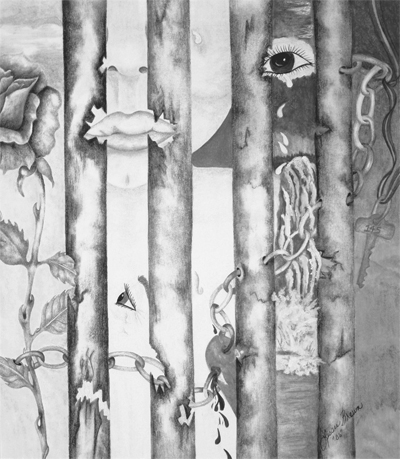
Foreword
Kathy Boudin
W omen slowly get up from their seats. At least forty in number, standing, turning their bodies at an angle, they stretch their arms up and out; their hands reach toward the light streaming in through the stained glass windows of a chapel. All together they say, We will never forget. We will remember. We will always remember youand one by one, they call out the names of the women they have left behind; those still inside, still scattered throughout five New York State prisons for women. Some of the women have been in prison for thirty years. Some went in at seventeen and are now fifty. Some look at their lives with no possibility of parole: Annie, Buzz, Shana, Milagros, Judy, Dominique, Roz, Deb, Aiesha, Joan, Ita, Rita, Carol, Donna The names come more and more rapidlyas voices fold into each other. Voices crack, holding back tears. Women who were bunkies, a neighbor in the next cell, a woman who braids hair, mothers in a parenting class, a woman who shared walking the circles around the yard, friends, a best friendstill in.
Now outside, these women, no longer wearing their denim green uniforms, instead form a rainbow of colorsof hand-me-down clothes, of clothes from thrift shops or 99-cent stores. Others are spiffy from first pay checks or professional and tailored with the confidence of having been out for a decade. Some have been home for only a month, others for ten years; some served thirty years, and others served four. We have just finished one of our monthly Saturday half-day retreats. We gather because prison doesnt wash off like the sweat after a long work day; it stays on you, stays in you. Coming together is a way to acknowledge that self openly with other women who know about it and who know each other. These women know about what it is to come home and to support each other in the search to build a new life.
The number of women in prison has swelled in the past thirty years. The landscape has changedboth inside and outside. Women, particularly African American women, are the fastest growing group entering prison in a society that incarcerates a larger percentage of its population than any other country in the world. And women are part of that larger reality of mass incarceration, the prison nation a recent New York Times editorial referred to. The total separation between the world of prison and the rest of society is fading. Before the enormous expansion of prisons, when a person went to prison, society defined it solely as an individual experience: she broke a law; she goes to prison. Now so many people are incarcerated, so many women are in prison, so many children are separated from their mothers, so many grandmothers are taking care of their children, so many girls are being arrested, that its not just a woman inside; its a whole family, in fact, a whole community that is penetrated and shaped by prison. The very fact that Razor Wire Women is edited by two women with family members incarcerated is a reflection of the new reach of prisons and of the new reach of consciousness of prisons.
Although prisons separate, segregate, and isolate those inside from those outside, the inside and outside can no longer be entirely separated. The very form of the book
Next page


